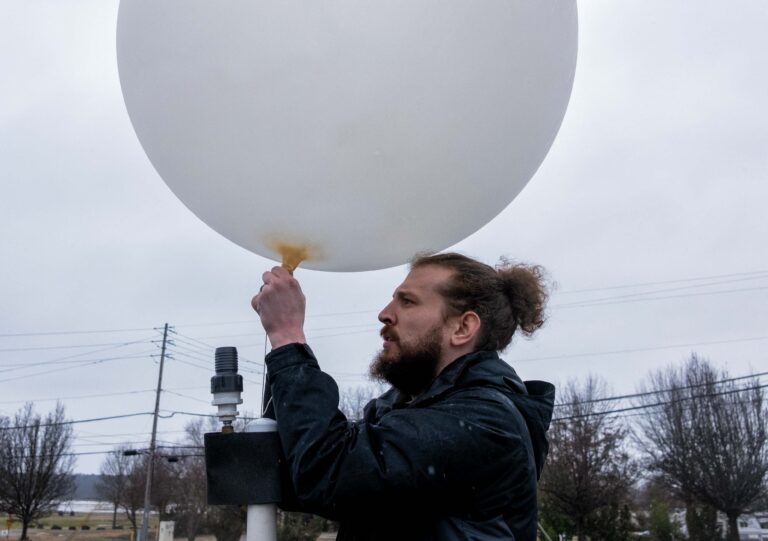A meteorologist has told Newsweek cuts overseen by Elon Musk’s Department of Government Efficiency (DOGE) could make it harder for the National Weather Service (NWS) to accurately issue tornado watches in advance of twisters striking.
Newsweek contacted the National Oceanic and Atmospheric Administration (NOAA), the NWS’s parent agency, for comment on Saturday via email outside of regular office hours.
Why It Matters
Less accurate tornado watch alerts from the NWS would make it harder for people to realize when they are in a tornado danger area, potentially putting lives at risk.
Earlier this month at least 39 people were killed when a deadly storm system, including tornados, ripped across the South and Midwest ranging from Missouri to Alabama.
What To Know
The NWS has announced it is suspending weather balloon launches, which are used to help produce weather forecasts, from nearly a dozen of its offices across the United States in response to staff shortages.
All launches have been suspended from NWS offices in Omaha, Nebraska, Rapid City, South Dakota, and Kotzebue, Arkansas.
In addition, the number of launches per day have been slashed from two to one for NWS offices in Aberdeen, South Dakota; Grand Junction, Colorado; Green Bay, Wisconsin; Gaylord, Michigan; North Platte, Nebraska; and Riverton, Wyoming.
In February, hundreds of NOAA employees lost their jobs in cuts overseen by DOGE, which the Trump administration created to slash what they deem to be wasteful federal government spending.
The agency was told to cut 10 percent of its total workforce, or around 1,029 jobs, according to PBS News.
Steve Decker, a tornado expert and director of Rutgers University’s Meteorology Undergraduate Program, told Newsweek via email on Wednesday that the reduced ballon launches will make it harder for the NWS to issue tornado alerts.
“The weather balloon data is used by computer weather forecast systems and also gives NWS forecasters situational awareness for tornado threats in the hours leading up to the storms,” he said. “I think the biggest impact will be at the tornado watch stage of the process, that is, the short-term forecasts that say conditions are favorable for tornadoes in the next 1-6 hours.”
Decker added: “The warnings themselves (where a tornado is detected or is imminent) are heavily dependent on real-time radar data, which as far as I know is not (yet) affected by these decisions. But I’d expect more tornado warnings out of the blue, that is, issued for places that didn’t have a tornado watch in place.”
According to an NWS public information statement last Thursday, the agency uses radiosondes, which are instruments attached to weather balloons, to “send back a wide range of upper atmospheric data to support weather forecasts, including temperature, dew point, relative humidity, barometric pressure, wind speed, and wind direction.”
The agency’s official website says the NWS issues a tornado watch when “weather conditions could lead to the formation of severe storms and tornadoes.”
People in these areas are urged to “be ready to act quickly” if a tornado warning is issued, or they see a twister themselves. The NWS releases a tornado warning when “a tornado has been spotted or indicated by weather radar, meaning a tornado is occurring or expected soon” meaning those in the area should “immediately seek refuge in the safest location possible.”

SETH HERALD/AFP/GETTY
What People Are Saying
Previously speaking to Newsweek about the cuts, former NOAA Administrator Rick Spinrad said: “This represents a threat to the personal safety of every American.”
Meteorologist Jeff Masters, co-founder of the Weather Underground website, previously told Newsweek: “This will likely result in increased loss of life and higher property damages. With damaging extreme weather events increasing, NWS staff should be growing to keep pace.”
Project 2025, a policy blueprint drawn up by the conservative-leaning The Heritage Foundation, called for the “break up” of the NOAA describing it as “one of the main drivers of the climate change alarm industry.”
What Happens Next?
At this stage, it is unclear whether further NOAA employee cuts will result in further reductions in the number of weather balloons being launched, or whether increased efficiencies will allow some of those cancelled to be restored.


